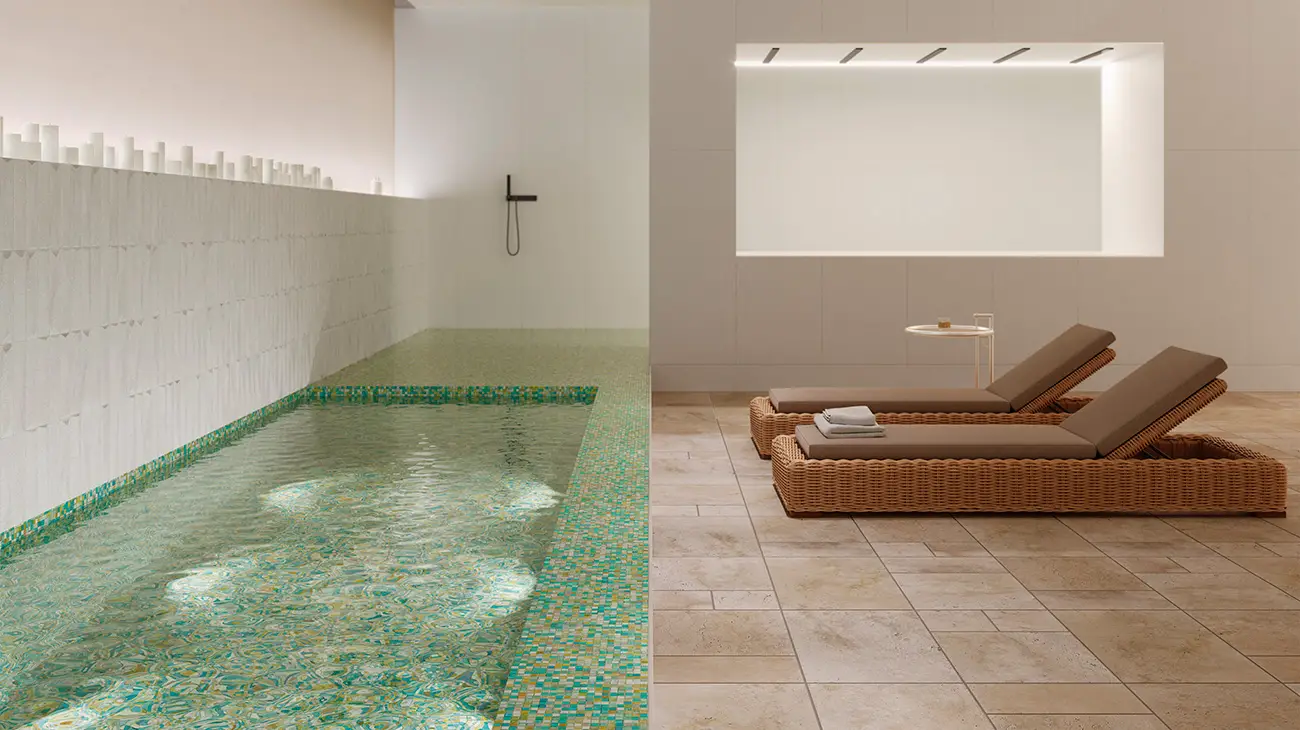TRAVERTINE
Travertine: A Stone of Enduring Beauty
Travertine is more than just a building material; it is a piece of history and nature brought into your home. Whether used in a modern living room, a classic bathroom, or a Mediterranean-style patio, travertine adds character and charm to any space. Its unique appearance and versatility ensure that it will continue to be a favored material for generations to come.

The History of Travertine
Travertine has a storied past, dating back to ancient civilizations such as the Egyptians, Greeks, and Romans. Some of the most iconic structures in Rome, such as the Colosseum, the Trevi Fountain, and St. Peter’s Basilica, were built using travertine.
In ancient times, travertine was not only valued for its aesthetic appeal but also for its durability and workability. Its relative softness compared to other stones made it easier to cut and shape, while its natural beauty and resistance to weathering ensured that it could stand the test of time.

Characteristics of Travertine
Travertine is a form of limestone deposited by mineral springs, especially hot springs. It is characterized by its fibrous, concentric appearance and is typically found in white, tan, cream, and rusty colors. The stone has a naturally porous texture, which can be filled to create a smooth surface or left unfilled for a more rustic look.
Caring for marble tables
Is essential to maintain their beauty and longevity. Here’s a guide on how to keep your marble surfaces looking their best:
1. Regular Cleaning
Dusting: Use a soft, dry cloth to remove dust and debris. Microfiber cloths are ideal as they won’t scratch the surface.
Wipe Spills Immediately: Marble is porous and can stain easily. Wipe up spills (especially acidic substances like citrus juices, wine, and vinegar) immediately with a soft cloth.
2. Safe Cleaning Solutions
pH-Neutral Cleaners: Use a mild, pH-neutral soap mixed with warm water for regular cleaning. Avoid acidic or abrasive cleaners that can damage the surface.
Homemade Solution: Mix a few drops of dish soap with warm water. Dampen a cloth with this solution to clean the table.
3. Avoid Scratching
Coasters and Mats: Use coasters for drinks and place mats under hot dishes to protect the surface.
Cutting Boards: Always use cutting boards to prevent scratches when preparing food.


